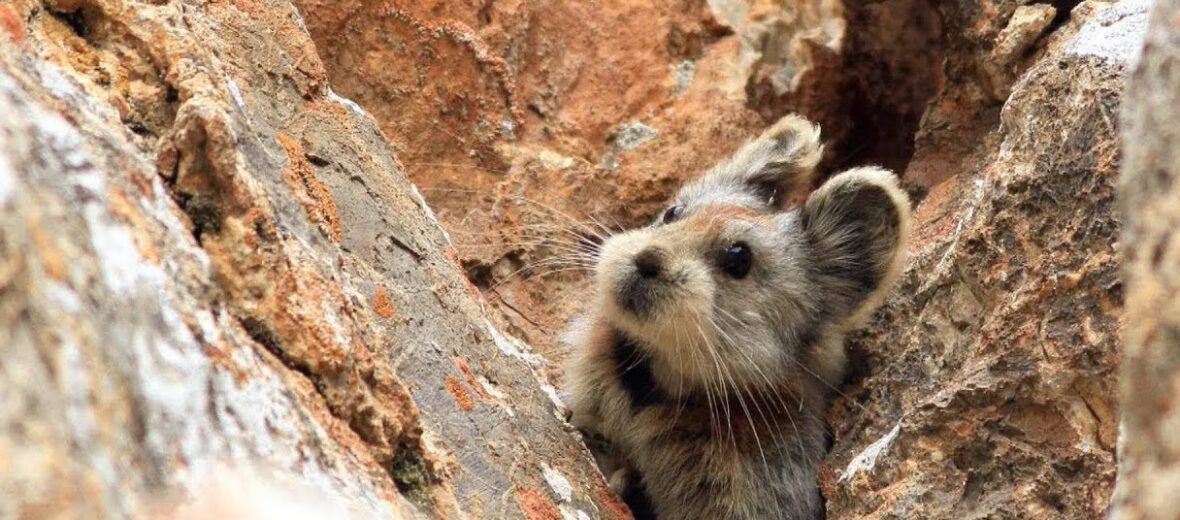
The Ili pika can only be found in a small and remote section of northwest China. They prefer to inhabit talus slopes which are at very high elevations. These little critters unfortunately face the threats of habitat loss and destruction at the hands of farming and ranching. This also adds to their competition for food. They also have to deal with climate change, which can shift and alter their habitat. The IUCN lists these lagomorphs (same family as hares and rabbits) as Endangered. Their populations are also decreasing.
First the Stats…
Scientific name: Ochotona iliensis
Weight: Up to 8.5 ounces
Length: Up to 8 inches
Lifespan: Up to 7 years
Now on to the Facts!
1.) These critters are diurnal (active during the day), with occasional nocturnal (active at night) activity.
2.) In winter, their activity is more diurnal and during other months of the year they are more active at night.
3.) Ili pikas are solitary and only come together to mate.
4.) While they do possess the ability to vocalize, they are mostly silent.
5.) Grasses and herbs make up their diet.
But wait, there’s more on the Ili pika!
6.) They produce up to 2 litters per year that consist of up to 3 leverets.
7.) With their low reproduction rate and small litter size, it makes things tougher on these little creatures to bounce back from near extinction.
Did you know…?
Ili pikas are known to build hay piles to come back to and eat later.
8.) The Ili pika does not hibernate during the winter.
9.) During the colder winter months, they will spend more time in their burrows and hides.
10.) Their call sounds a bit like a squeakier, high-pitched lamb’s bleat.
But wait, there’s still more on the Ili pika!
11.) Birds of prey, coyotes, foxes, and weasels all may prey on Ili pikas.
12.) They are named after the Ili River, in China.
13.) The Ili pika was originally discovered in 1983, in the Tian Shan Mountains, by conservationist Li Weidong.
Now a Short Ili Pika Video!
Be sure to share & comment below! Also, check out the Critter Science YouTube channel. Videos added regularly!
Want to suggest a critter for me to write about? Let me know here.
Some source material acquired from: Wikipedia & IUCN



